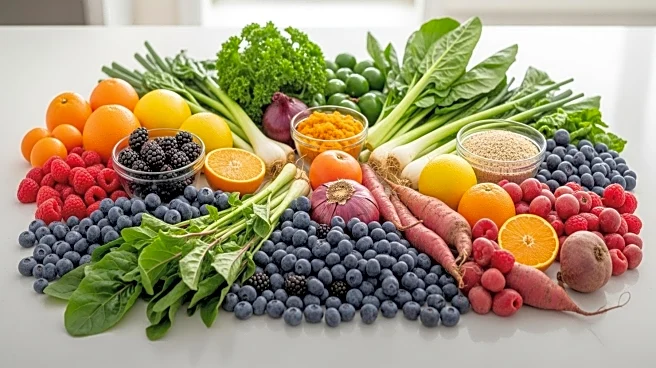What is the story about?
What's Happening?
The global dietary fibres market is experiencing significant growth, with its value estimated at $7.9 billion and projected to reach nearly $15 billion by 2030. This expansion is largely driven by increasing consumer interest in fibre-rich foods due to their health benefits, such as improved digestive health, lowered cholesterol, and reduced risk of chronic diseases. The Asia Pacific region leads the market with a 40% share, followed by North America and Europe. The trend, known as 'fibremaxxing,' is gaining popularity on social media, reflecting a broader consumer shift towards wellness-focused products. Various sectors, including beverages, bakery, dairy, and snacks, are incorporating fibre-rich ingredients to meet this demand.
Why It's Important?
The growing interest in dietary fibre highlights a significant shift in consumer preferences towards health and wellness. This trend presents opportunities for food and beverage companies to innovate and differentiate their products by incorporating functional ingredients. As consumers increasingly seek clean-label and gut-friendly foods, brands that successfully integrate fibre into their offerings can capitalize on this demand, potentially boosting sales and market share. The expansion of the fibre market also underscores the importance of functional nutrition in addressing public health concerns, such as obesity and chronic diseases, by promoting healthier eating habits.
What's Next?
As the fibre market continues to grow, companies are likely to invest in research and development to create new fibre-enriched products that cater to consumer preferences for taste and convenience. The trend towards functional beverages and foods is expected to accelerate, with brands exploring innovative formulations that combine flavour with health benefits. Additionally, the focus on clean-label products may drive further advancements in ingredient sourcing and processing techniques. Stakeholders, including manufacturers and retailers, will need to adapt to these evolving consumer demands to remain competitive in the market.
Beyond the Headlines
The rise of fibre as a key component in functional nutrition reflects broader societal shifts towards preventive health and wellness. This trend may influence public policy and healthcare initiatives aimed at promoting healthier diets and reducing healthcare costs associated with lifestyle-related diseases. Furthermore, the emphasis on fibre-rich foods could lead to increased awareness and education about nutrition, encouraging consumers to make informed dietary choices. As fibre becomes a staple in everyday diets, it may also impact agricultural practices, with a potential increase in demand for fibre-rich crops.
AI Generated Content
Do you find this article useful?













